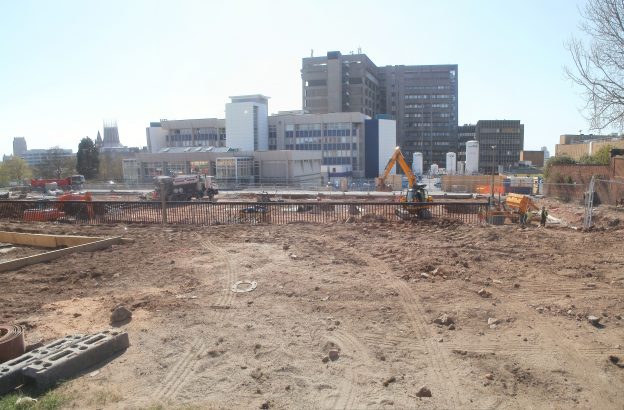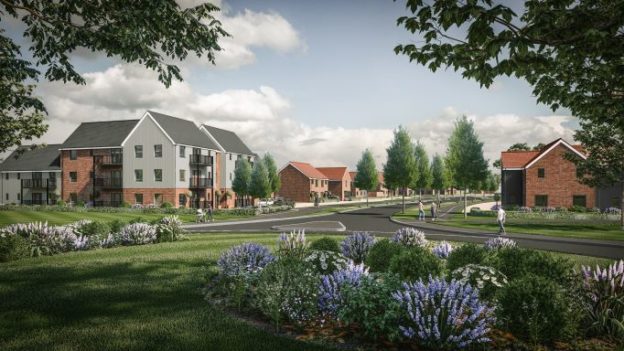By Michael Hardware, Director of Planning and Property
This article was published in Housebuilder magazine on September 7, 2018. You can view it here (registration required).
The role of county councils in planning appears to be changing. Hertfordshire County Council last year called for more planning powers to be able to provide infrastructure, whereas earlier this year it was rumoured that failed local plans may well be passed to county councils to oversee. Some councils are already taking a far greater role in the planning of larger developments, especially garden towns and villages.
This could be a belated step to fill the strategic planning black hole created in 2011 following the demise of regional targets and Regional Development Agencies. This was an issue raised in Housebuilding as long ago as 2009 and led to the then coalition government creating a ‘duty to cooperate’, and we all know how successful that has been!
“Counties should and do play a key role in coordinating between districts and boroughs,” said Cllr Kevin Bentley, deputy leader of Essex County Council, “in effect facilitating that duty to cooperate.
“Apart from the ability we have to join-up the thinking across the district borders, all county councils must have a greater strategic role in the delivery of infrastructure for development. It is critical this is considered earlier in the plan process and brought forward in a more timely way.”
If there was ever a greater example of where an over-arching authority was needed it is Harlow, also in Essex. Having outgrown its new town borders, it faces proposed expansion of over 20,000 new homes being in three planning districts and infrastructure involving two county councils. Without oversight this development will move forward in a fragmented and uncoordinated way, and that is before politics intervenes, which it invariably does especially when different parties are in control.
Regional mayors are mooted to be the solution to many things including strategic planning, even though they are not being adopted everywhere. Although few have yet taken planning powers, most have indicated they will. The Cambridge and Peterborough Mayor has strong views on development and will undoubtedly produce a spatial plan for his region in collaboration with the districts and county in the coming months. But is this additional level of bureaucracy needed when the counties already exist?
Inward investment
County councils already have a role in promoting inward investment, and that is directly related to growth. Cllr Gagan Mohindra, portfolio holder for economic development at Essex County Council said: “Decisions to relocate are often long and complicated and involve studies of potential areas including infrastructure, availability of labour with the right mix of skills, and location of supply chain and support services.
“Enterprise zones are important growth accelerators as they attract new industries to an area. This makes the considerations even more important as generally these zones are coupled with growth areas able to support these new industries and sectors.”
Graham Sutton, cabinet member for planning at Dacorum Council, can see cooperation happening on this: “There has been very productive collaboration between my council in Hemel Hempstead, St Albans, Hertfordshire County and the Herts LEP on delivering the Enterprise Zone.
“We are also working with Hertfordshire County Council on the A414 project, which also involves the other district and county councils along the corridor to Chelmsford.”
County councils already play a role in local planning through highways and education provision, but even here they have not excelled. Most of us have been at consultations where local councillors and residents ask about traffic, health and schools and the answers given are more often than not about the obligatory contribution that will be made but no specifics being available. Often, solutions are considered once a development has been long completed. Perhaps this is a little general, but could county councils do better here? The answer is undoubtedly yes.
Roles need clarity
The wider role of county councils seems to vary immensely with some getting involved at a strategic level and others just at the infrastructure delivery level. Andrew Taylor, head of planning at Countryside, said: “It is certainly a very mixed picture across the country.
“There are examples of where county councils have brought forward infrastructure ahead of development, such as North West Cambridge where a primary school was built before the housing delivery, but it is a delicate balance between development and provision of infrastructure.
“Generally, counties should be more proactive and get involved earlier, providing details of solutions for education and highways, and a realistic timescale when these will be delivered. They could also coordinate agencies on health delivery.”
The role of county councils does need more clarity both in terms of its delivery on its existing role as well as their greater strategic involvement, but MHCLG currently seems happy to let individual counties decide its level of involvement in local planning.
Cllr Dr Richard Moore, chairman of the Strategic Planning and Infrastructure Committee at Basildon Council, and an Essex County Councillor, sees that counties could play a key role. He said: “With some careful thought, the existing role of counties could be enhanced to ensure delivery of solutions for developments in terms of infrastructure that concerns local communities.”
“Local communities would be far more likely to accept development if the infrastructure is made available first so communities could see the new roads, junctions, roundabouts, and schools, up front before the hundreds of houses become a reality – Infrastructure First!
“Counties could also play a key strategic role in wider areas where there needs cross-border coordination and collaboration, such as with garden communities, providing the key infrastructure solutions, but this has to be at the outset, when the site or sites are being promoted, so that those involved – developers, councils and residents alike – have full information upon which to comment and make decisions.”
As to whether counties should be inflicted upon districts and boroughs against their will, such as with the local plan process, is another matter. Cllr Chris White, a St Albans District and Hertfordshire County councillor, does not think counties can get more involved in local planning because they do not have the capability or the experience to do it.”
This is a view many would support, although the strategic position county councils currently occupy does lend itself to a wider role in local planning.
Michael Hardware is an Essex County and Harlow District councillor. He is also an Associate Director at planning public affairs consultancy Chelgate Local.



 for 262 new homes on three parcels within the Heybridge North Garden Community, masterplanned by Countryside. The committee originally deferred its decision but subsequently consented the application unanimously in December 2022.
for 262 new homes on three parcels within the Heybridge North Garden Community, masterplanned by Countryside. The committee originally deferred its decision but subsequently consented the application unanimously in December 2022.
 planning applications for a development of 123 homes and a health centre in Romford, Havering. Located around the historic Neopost House building, the proposed development will provide three blocks with affordable housing through social rent and shared ownership, as well as green recreation space for families.
planning applications for a development of 123 homes and a health centre in Romford, Havering. Located around the historic Neopost House building, the proposed development will provide three blocks with affordable housing through social rent and shared ownership, as well as green recreation space for families.

 over 1,000 people: it is an integral part of the history of paper-making. Redrow South East proposed a development of around 200 homes very much in keeping with the history of the site and the existing Listed buildings. Chelgate assisted with political engagement and local community and stakeholder consultation for this historic site – we were a finalist in the Planning Project of the Year category of the PRCA public affairs awards in 2019.
over 1,000 people: it is an integral part of the history of paper-making. Redrow South East proposed a development of around 200 homes very much in keeping with the history of the site and the existing Listed buildings. Chelgate assisted with political engagement and local community and stakeholder consultation for this historic site – we were a finalist in the Planning Project of the Year category of the PRCA public affairs awards in 2019.


